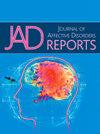儿童和青少年情绪障碍统一方案的疗效:系统回顾和荟萃分析
Q3 Psychology
引用次数: 0
摘要
跨诊断治疗,如儿童和青少年情绪障碍统一协议(UP-C/A; Ehrenreich-May, J., Kennedy, s.m., Sherman, j.a., Bilek, e.l., Buzzella, b.a., Bennett, s.m., Barlow, d.h., 2017a)旨在针对精神障碍的共同机制并获得积极的治疗结果。几项研究调查了UP-C/A,在改善内化症状方面取得了令人鼓舞的结果。然而,目前还没有对现有研究的疗效进行荟萃分析。在这项预登记的系统评价和荟萃分析(PROSPERO CRD 42023474832)中,我们分析了UP-C/A与适用的对照治疗相比,在减少内化症状(主要结局)和次要结局(如情绪调节)方面是否有效,以及从治疗前到治疗后和随访。我们还检查了调节因子(即样本和处理特征)是否预测UP-C/A的效果。我们纳入了21项研究(9项随机对照试验,11项非对照研究,1项单例实验研究),共N = 994名受试者。对于内化症状,我们发现治疗后(g = 0.58, p = 0.014)和随访时(g = 0.79, p = 0.003)的控制效果中等至较大。在这两种情况下,不受控制的影响都很大。我们还发现次要结果(即情绪调节,精神病理的整体严重程度,整体功能)有中等到较大的影响。治疗方式对疗效无影响。总的来说,我们的研究结果表明,UP-C/A在治疗儿童和青少年的内化症状方面是有效的,可以以不同的形式提供。然而,需要更多的研究来得出关于这些影响的具体治疗机制的有力结论。本文章由计算机程序翻译,如有差异,请以英文原文为准。
The efficacy of the unified protocol for emotional disorders in children and adolescents: A systematic review and meta-analysis
Transdiagnostic treatments such as the Unified Protocol for Emotional Disorders in Children and Adolescents (UP-C/A; Ehrenreich-May, J., Kennedy, S.M., Sherman, J.A., Bilek, E.L., Buzzella, B.A., Bennett, S.M., Barlow, D.H., 2017a) aim to target shared mechanisms across mental disorders and to achieve positive treatment outcomes. Several studies investigated the UP-C/A with promising results regarding the improvement of internalizing symptoms. However, there is currently no meta-analysis investigating the efficacy across the existing studies. In this preregistered systematic review and meta-analysis (PROSPERO CRD 42023474832), we analyzed whether the UP-C/A is effective in reducing internalizing symptoms (primary outcome) and secondary outcomes such as emotion regulation in comparison to control treatments where applicable, and from pre- to post-treatment and follow-up. We also examined whether moderators (i.e., sample and treatment characteristics) predicted the effects of the UP-C/A. We included 21 studies (9 RCTs, 11 uncontrolled studies, 1 single-case experimental study) with a total of N = 994 participants. For internalizing symptoms, we found moderate to large controlled effects post-treatment (g = 0.58, p = .014) and at follow-up (g = 0.79, p = .003). Uncontrolled effects were large in both cases. We also found moderate to large effects for secondary outcomes (i.e., emotion regulation, global severity of psychopathology, global functioning). Treatment format did not impact the efficacy. Overall, our findings suggest that the UP-C/A is effective in treating internalizing symptoms in children and adolescents that can be offered in different formats. However, more research is needed to draw robust conclusions regarding specific treatment mechanisms underlying these effects.
求助全文
通过发布文献求助,成功后即可免费获取论文全文。
去求助
来源期刊

Journal of Affective Disorders Reports
Psychology-Clinical Psychology
CiteScore
3.80
自引率
0.00%
发文量
137
审稿时长
134 days
 求助内容:
求助内容: 应助结果提醒方式:
应助结果提醒方式:


